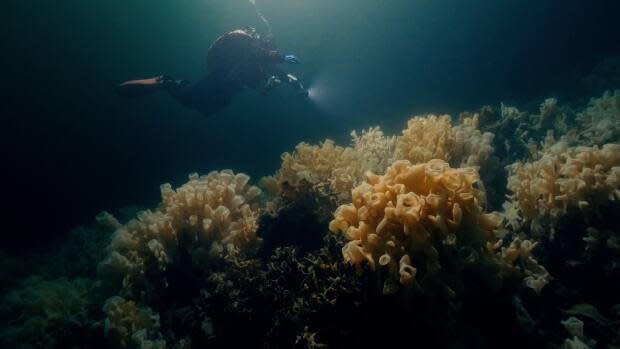B.C.'s Howe Sound designated a UNESCO biosphere region after years of lobbying

After nearly five years of campaigning, B.C.'s Howe Sound has finally been designated a United Nations Educational, Scientific and Cultural Organization (UNESCO) biosphere, allowing stakeholders in the region to collaborate more effectively on sustainable development.
A UNESCO committee announced on Wednesday that the region would become Canada's 19th biosphere region and B.C.'s third, after Clayoquot Sound and Mount Arrowsmith on Vancouver Island.
Howe Sound, known as Átl'ka7tsem in the Squamish language, covers an area of 2,187 square kilometres northwest of Vancouver, surrounding the community of Squamish and extending west to the Sunshine Coast.
The area has seen significant industrial activity over the past two decades and is a biodiversity hotspot, featuring rare glass sponges throughout the watershed.
"We've seen a shift more toward tourism and recreation and many more people visiting the region," said Ruth Simons, who led the Howe Sound Biosphere Region Initiative Society.
"What will continue to happen going forward is an emphasis on ensuring that we are conserving and protecting our sensitive ecological areas and habitat so we don't suffer any more biodiversity loss."
The new designation does not impose any new rules on the region or its residents, but incentivizes collaboration to ensure further conservation, according to Simons.

'Icing on the cake'
Howe Sound has seen industrial activities throughout its watershed, including logging activities that continue to this day.
Despite tourists flocking to the region in recent years, it is set to be the site of a major natural gas project, the Woodfibre LNG export facility. A statement on the project's website says it "supported" the biosphere initiative and would aim to be sustainable.
Industrial pollution in the region was once a major concern, but a report last year showed it had significantly decreased.
Simons says the reason it now qualifies as a UNESCO biosphere is because of the sustainable development work done by authorities around the region, including the Sḵwx̱wú7mesh nation and the District of Squamish.
"I think what this does is it sends a message to the authorities that people are behind us. [...] The existing aspirational goals we have are supported," she said.
One of the biggest aspects of that work, Simons says, was the discovery of the glass sponge reefs that are found throughout the region and were once thought to be extinct.

She hopes that the new designation will ensure the long-term support of federal bodies and says that work must continue to ensure the region will remain a biosphere.
"We were told at the very beginning that this [designation] is like the icing on the cake. [...] We will really look forward to having a very, very cautious get-together very soon with a number of our supporters."

